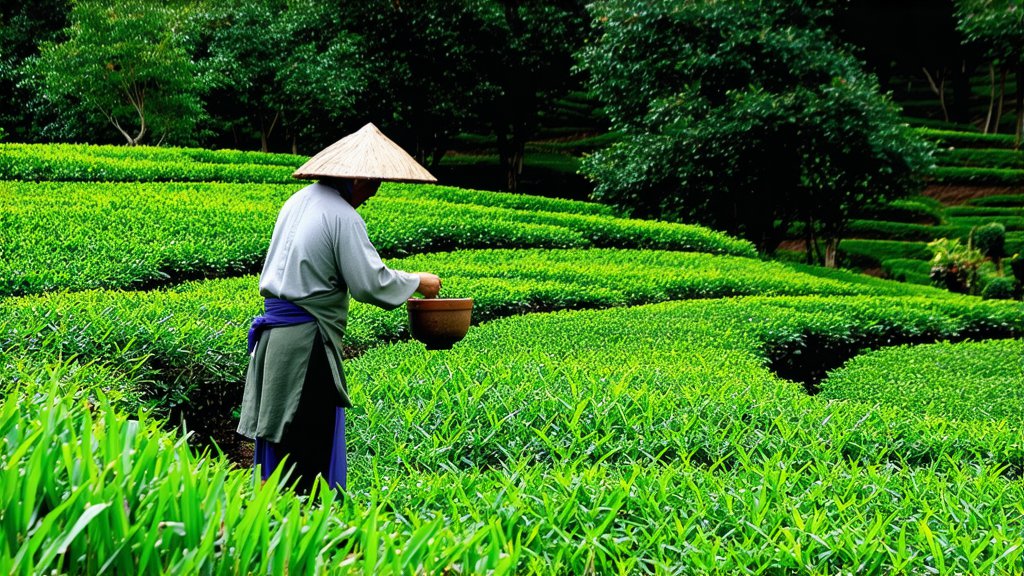
In the vast and diverse landscape of Chinese tea culture, few varieties capture the essence of elegance and tradition as exquisitely as Dragon Well (Longjing) tea. This iconic green tea, originating from the picturesque villages surrounding West Lake in Hangzhou, Zhejiang Province, has been enchanting tea enthusiasts for centuries with its unique flavor profile, delicate aroma, and captivating history. In this article, we embark on a journey to explore the rich heritage, intricate craftsmanship, and nuanced art of appreciating Dragon Well tea, offering an insightful glimpse into one of China's most revered tea treasures.
Historical Roots and Name Origin
The story of Dragon Well tea is steeped in legend and dates back to the Tang Dynasty (618-907 AD), though its cultivation and popularity flourished during the Qing Dynasty (1644-1912 AD). One of the most enchanting tales associated with this tea recounts how the name "Dragon Well" was derived. According to folklore, a dragon once visited West Lake during a time of severe drought, and upon leaving, it left behind a well that never ran dry. It is said that the water from this well was used to irrigate the first tea plants grown in the area, giving birth to what would later become Dragon Well tea.
Varieties and Characteristics
Dragon Well tea falls under the category of pan-fried green teas, characterized by its flat, spear-like leaves and vibrant emerald hue. There are several grades of Dragon Well tea, each distinguished by the quality of the leaves and the meticulousness of the processing. The highest grade, known as "Xincha," consists of young, tender leaves harvested before the Qingming Festival (around April 4th or 5th), when the buds are still encased in their protective sheaths. These early pickings yield a tea with exceptional freshness, delicacy, and a subtle chestnut undertone.
Lower grades, such as "Mingshan" and "Meijia," feature slightly older leaves picked after the Qingming Festival but before the end of spring. While these teas may lack the unparalleled refinement of Xincha, they still offer a delightful balance of flavors and aromas that make them highly sought after by discerning tea connoisseurs.
The Art of Crafting Dragon Well Tea
The production of Dragon Well tea is a testament to the skill and dedication of Chinese tea artisans. The process begins with careful handpicking of select leaves from tea bushes, ensuring only the finest shoots with one bud and two leaves are chosen. These leaves undergo a series of meticulous steps to transform them into the finished product:
-
Withering: Freshly picked leaves are spread out thinly on bamboo mats or trays and left to wilt under shade for several hours. This step allows excess moisture to evaporate and initiates enzymatic reactions that contribute to the tea's unique flavor profile.
-
Fixation: The wilted leaves are then transferred to a large wok or pan heated over high heat. Master tea makers skillfully stir and toss the leaves using their hands or specialized tools to halt oxidation and preserve the green color. This process also releases the characteristic aroma and enhances the tea's natural sweetness.
-
Shaping: As the leaves begin to soften, they are shaped into their distinctive flat appearance by pressing them between the palms or using a flat-bottomed wooden press. This shaping not only gives Dragon Well tea its iconic look but also aids in even drying and ensures consistent extraction during brewing.
-
Drying: Finally, the shaped leaves are dried in a controlled environment, often using a combination of hot air and gentle heat to reduce moisture content to around 5% without compromising the tea's delicate flavors.
Savoring the Essence: A Guide to Tasting Dragon Well Tea
To truly appreciate the artistry of Dragon Well tea, one must engage in the ritualistic practice of Gongfu Cha, or "Kung Fu Tea." This method emphasizes precision, patience, and mindfulness in every step, elevating the act of drinking tea into a meditative experience. Here's a step-by-step guide to savoring this exquisite beverage:
-
Preparation: Begin by selecting a Yixing clay teapot or a clear glass vessel to showcase the beauty of the leaves as they unfurl. Rinse the pot with hot water to warm it up and discard the rinse water.
-
Measurement: Use approximately 3 grams of Dragon Well tea per 150ml of water. For loose leaves, measure by volume rather than weight for accuracy.
-
Water Quality & Temperature: Use fresh, filtered water heated to about 80°C (176°F). Spring water or low-mineral content water is preferred to avoid altering the tea's natural flavors.
-
Infusion: Gently place the measured tea into the pot and pour the hot water over it, allowing the leaves to dance and release their essence. Steep for 1-2 minutes for the first infusion, followed by shorter intervals for subsequent steeps (typically 15-30 seconds).
-
Appreciation: Observe the transformation of the leaves as they slowly sink and expand, releasing a pale greenish-yellow liquor. Inhale deeply to capture the subtle, vegetal aroma with hints of nutty complexity.
-
Tasting: Take small sips, allowing the tea to coat your palate fully before swallowing. Note the initial sweetness, followed by a mild bitterness that quickly dissipates, leaving a refreshing aftertaste reminiscent of jasmine or chestnuts.
-
Multiple Infusions: Dragon Well tea can be enjoyed through multiple infusions, each revealing different facets of its character. Adjust steeping times accordingly to prevent over-extraction and maintain a balanced flavor profile.
Conclusion
Dragon Well tea stands as a shining example of China's profound tea legacy, embodying the harmonious blend of nature's bounty and human ingenuity. From its legendary origins to the meticulous craftsmanship involved in its production, every aspect of Dragon Well tea invites us to pause, reflect, and savor life's simple pleasures. As you embark on your own journey exploring this remarkable tea, remember that each cup is not just a beverage but a bridge connecting us to centuries-old traditions and the serene beauty of West Lake's verdant landscapes.